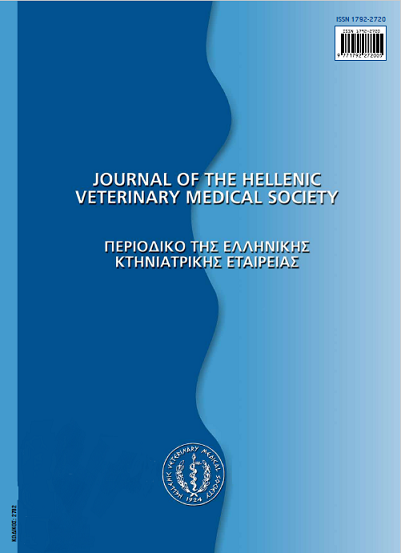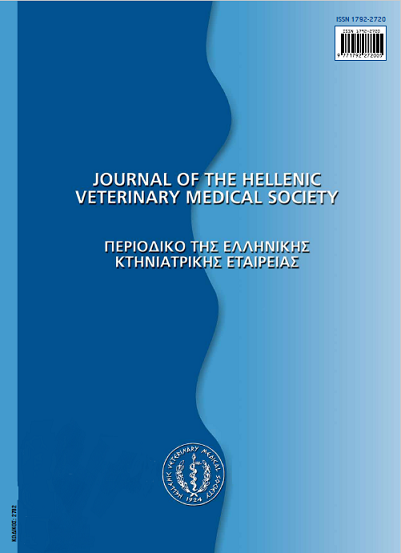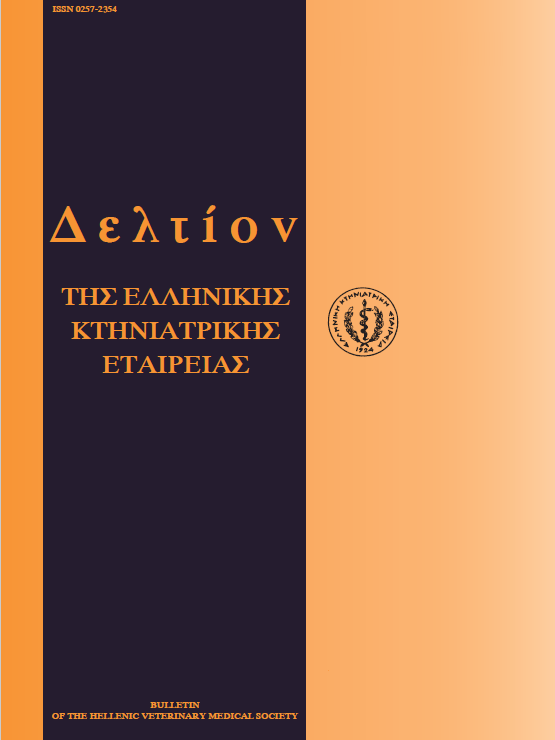Canaries: Management, nutrition, common disorders
Abstract
Commercial production of canaries, which are among the most popular birds worldwide, is based mainly on the nice singing, good-looking feather coloration and total appearance of these birds. Population of canaries in Greece is bigger in comparison with other birds (psittacines, etc.). These birds live separately in cages or in groups in production units. The number of birds, which are being carried to private surgeries, is continuously increasing. Despite some difficulties, such as small size, great sensitivity, susceptibility to stress, and inconvenience in administrating drugs in accurate doses, a veterinarian may proceed to therapies or even operations in canaries with good results. Principals of canaries' management and nutrition, as well as the most commonly encountered cases are described in the present paper. Such cases include stop of singing, feather problems and severe lisdessness. Brief description of the problems mentioned above and the methods of control may offer to the practitioner the knowledge to approach such cases in his surgery.
Article Details
- Come citare
-
IORDANIDIS (Π. ΙΟΡΔΑΝΙΔΗΣ) P. (2017). Canaries: Management, nutrition, common disorders. Journal of the Hellenic Veterinary Medical Society, 54(1), 78–83. https://doi.org/10.12681/jhvms.15223
- Fascicolo
- V. 54 N. 1 (2003)
- Sezione
- Review Articles
Authors who publish with this journal agree to the following terms:
· Authors retain copyright and grant the journal right of first publication with the work simultaneously licensed under a Creative Commons Attribution Non-Commercial License that allows others to share the work with an acknowledgement of the work's authorship and initial publication in this journal.
· Authors are able to enter into separate, additional contractual arrangements for the non-exclusive distribution of the journal's published version of the work (e.g. post it to an institutional repository or publish it in a book), with an acknowledgement of its initial publication in this journal.
· Authors are permitted and encouraged to post their work online (preferably in institutional repositories or on their website) prior to and during the submission process, as it can lead to productive exchanges, as well as earlier and greater citation of published work.












